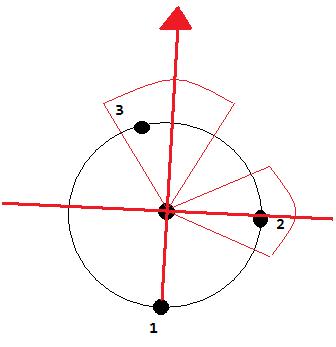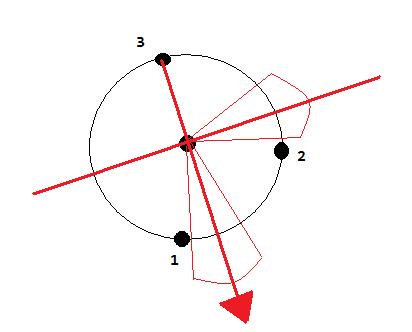Normal roundabouts give a ‘turn right’ / ‘continue straight’ instruction. Non-normal roundabouts give a ‘take the X exit’ instruction. This section will explain the difference between a normal and a non-normal roundabout.
A normal roundabout:
- Will give you a ‘turn right', 'turn left’ or ‘continue straight’ instruction.
- Has up to 4 nodes.
- All exit nodes are aligned within "normal" range of the entrance node.
A non-normal roundabout:
- Has 5 or more nodes (Ex. Each segment of a split road connects at its own node.)
- Has irregularly placed nodes (this will be covered in the examples.)
- Will give you a ‘take the X exit’ (with arrows around it) instruction.
A roundabout can be both normal and non-normal at the same time depending on your entrance node.
Some examples will help explain:
- The angles of the segments approaching the nodes do not matter. Both of these layouts will give the same instructions, because only the angles between the nodes and the center of the roundabout determine which instructions are given.
For the sake of simplicity, let’s look at a roundabout with three exits.
- Each time you approach a roundabout from one of the three nodes, an imaginary X-Y axis is drawn: (1) with the origin at the center of the roundabout and (2) aligned to the entrance node.
- Coming from node #1, this is how we see the roundabout:

- Both exits 2 and 3 are within the normal range (90°±15° & 180°±15°).
- Both exits will get an instruction to ‘turn right’ or ‘continue straight’.
- Coming from node #3, this is how we see the roundabout:

- Both exits 1 and 2 are not within the ‘normal’ range – both will get a ‘take the X exit’.
- Note: even if one of these exits was within normal range, the roundabout itself will be ‘non-normal’ and all exits will get the ‘take the X exit’ prompt. The entire roundabout must be normal.

